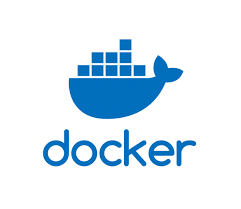If you’re anything like me—a mid-level software engineer with a strong foundation in building REST APIs but relatively new to infrastructure-level tooling — Docker might have initially seemed like an intimidating piece of technology. I used to view it as this complex, scary tool that everyone somehow knew how to use.
But here’s the thing: once I got past that initial fear and started experimenting with Docker for my personal projects, it became clear just how powerful and essential it is. At first, I was using Docker somewhat blindly—using Dockerfiles without truly understanding what each instruction meant. It was more of a means to an end rather than a core part of my development workflow.
Over the past couple of years, however, I made a conscious decision to truly learn Docker from the ground up. And let me tell you—doing so has completely changed how I approach application development, especially when thinking about scalability, deployment, and team collaboration.
So, What Exactly Is Docker?

In simple terms, Docker is a platform for building, running, and managing containers. It has become the defacto standard tool for creating and managing containers.
That said, understanding Docker begins with understanding the concept of containers.
What are Containers?
A container is a standardized unit of software. It is a package of code and the dependencies or libraries that are needed to run that code.
If that’s too complicated to understand, check out the below Suitcase Analogy
The Suitcase Analogy

Before leaving, you carefully pack everything you could possibly need into one compact suitcase—your clothes, laptop, chargers, extra shoes, even snacks. This way, no matter where you travel—whether it’s a hotel, a friend’s place, or a remote cabin—you don’t have to rely on what’s available at the destination. You’re self-sufficient.
🔄 Why It Makes Sense
Just like how your suitcase keeps your travel smooth and stress-free, containers keep your app deployment predictable and reliable—no surprises, no missing items, no compatibility issues. A Docker container packages everything an application needs to run: the code, runtime, libraries, environment variables, and more. It ensures your app doesn’t rely on the setup of the host system.
Why Docker Matters: Real-World Developer Scenarios
Here are three common situations where Docker makes life easier:
✅ 1. Keeping Build Environments the Same for Testing and Production
Ever faced the classic “It works on my machine” problem? Maybe your app runs smoothly locally but crashes in production. Often, the root cause is inconsistent dependencies or library versions.
With Docker: You build the app once inside a container, and that exact build can be shipped to staging, testing, or production—no surprises.
👨💻 2. Ensuring Team Consistency Across Machines
In team environments, developers might have different versions of Node.js, Python, or other dependencies on their machines. One version mismatch, and suddenly half the team is dealing with strange bugs.
With Docker: Everyone runs the app inside the same containerized environment, regardless of their personal OS or setup. This leads to smoother collaboration and faster onboarding.
🔀 3. Managing Separate Environments for Different Projects
Let’s say one of your projects requires Node 14, while another needs Node 16. Switching between them manually is frustrating and error-prone.
With Docker: You can define isolated environments per project, each with its own dependencies and versions, without interfering with each other.
Conclusion
Docker is like packing a self-sufficient suitcase for your app—it contains everything it needs to run, anywhere. Whether you’re a solo dev or working in a large team, it gives you consistency, portability, and peace of mind. If you’re curious to explore more, check out the official Docker documentation for in-depth guides and reference material. Next up, we’ll discuss how Docker works internally and what images really are!
Want to know more about me? Check out feyashah.com or just drop a friendly hello on LinkedIn!
